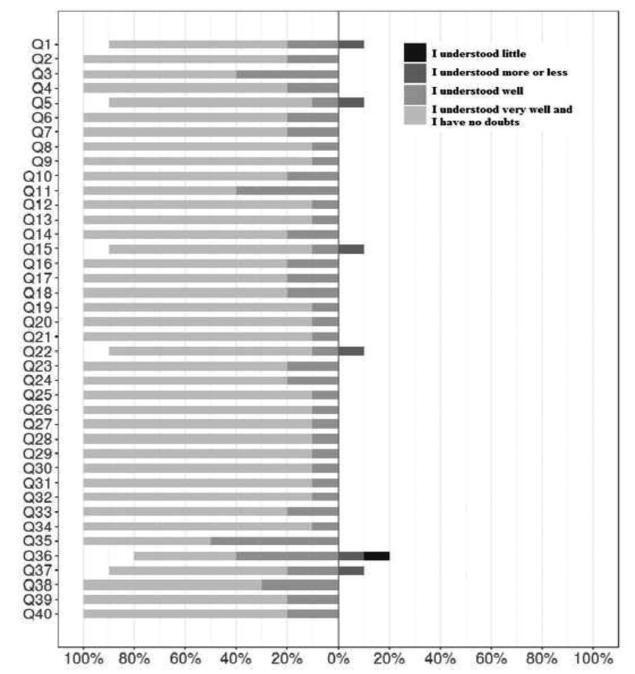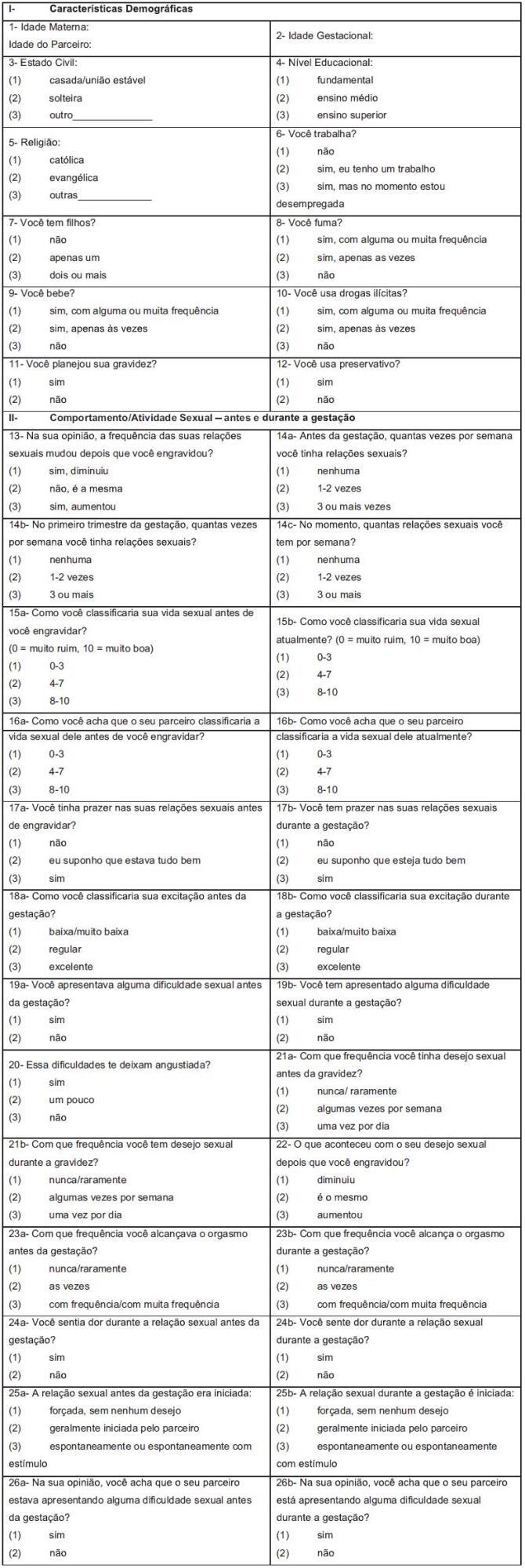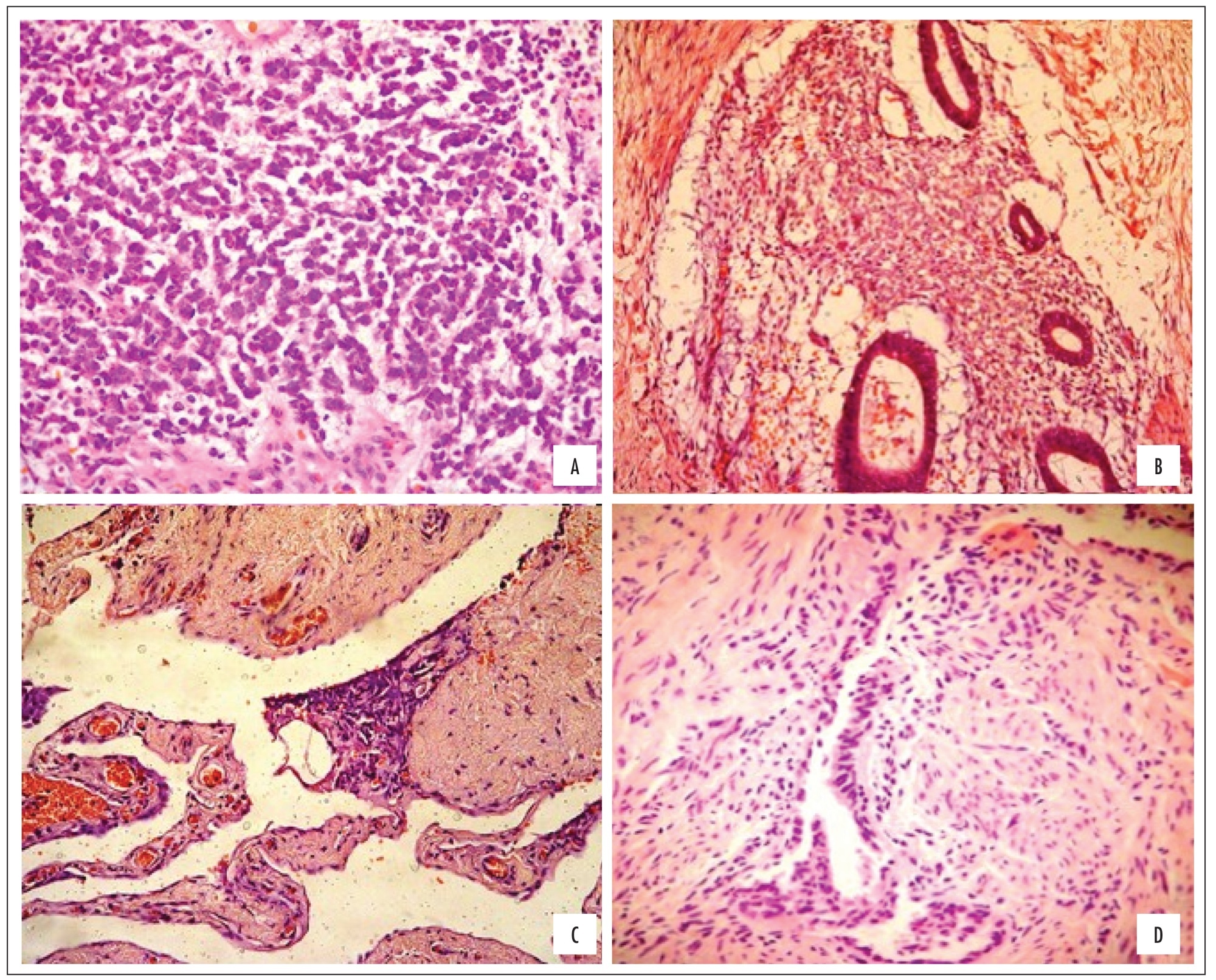Summary
Revista Brasileira de Ginecologia e Obstetrícia. 2021;43(12):932-939
To study maternal anxiety in pregnant women without comorbidities in the context of the COVID-19 outbreak in Brazil and to study maternal knowledge and concerns about the pandemic.
This is a secondary analysis from a national multicenter cross-sectional study performed in 10 cities, from June to August, 2020, in Brazil. Interviewed postpartum women, without medical or obstetrical comorbidities, were included in the present subanalysis. A structured questionnaire and the Beck Anxiety Inventory (BAI) were applied.
Out of the 1,662 women, 763 (45.9%) met the criteria for the current analysis and 16.1% presented with moderate and 11.5% with severe maternal anxiety. Moderate or severe maternal anxiety was associated with high school education (odds ratio [OR]:1.58; 95% confidence interval [CI]:1.04–2.40). The protective factor was cohabiting with a partner (OR: 0.46; 95%CI: 0.29–0.73). There was a positive correlation between the total BAI score and receiving information about care in the pandemic (rpartial 0.15; p < 0.001); concern about vertical transmission of COVID-19 (rpartial 0.10; p = 0.01); receiving information about breastfeeding (rpartial 0.08; p = 0.03); concerns about prenatal care (rpartial 0.10; p = 0.01), and concerns about the baby contracting COVID-19 (rpartial 0.11; p = 0.004). The correlation was negative in the following aspects: self-confidence in protecting from COVID-19 (rpartial 0.08; p = 0.04), having learned (rpartial 0.09; p = 0.01) and self-confidence in breastfeeding (rpartial 0.22; p < 0.001) in the context of the pandemic.
The anxiety of pregnant women without medical or obstetrical comorbidities was associated to high school educational level and not living with a partner during the COVID-19 pandemic. Self-confidence in protecting against COVID-19 and knowledge about breastfeeding care during the pandemic reduced maternal anxiety.
Summary
Revista Brasileira de Ginecologia e Obstetrícia. 2019;41(6):371-378
The aim of this study was to determine the content and face validity of the Mackey Childbirth Satisfaction Rating Scale (MCSRS) questionnaire cross-culturally adapted to Brazilian Portuguese.
The MCSRS is a questionnaire with 34 items related to childbirth satisfaction. The forward- and back-translated versions were compared with the original material, and 10 experts analyzed each item according to the following criteria: clarity, semantic equivalence, appropriateness, and cultural relevance. The final version was presented to 10 mothers for face validation to ensure the questionnaire would suit the target population.
The total of 34 items assessed by experts for clarity, semantic equivalence, appropriateness, and relevance showed positive agreement of 0.85, 0.92, 0.97 and 0.97; negative agreement of 0.13, 0.09, 0.04 and 0.04; and total agreement of 0.75; 0.85, 0.94 and 0.94, respectively. Multilevel linear modeling was applied with crossed random effects and with nested random effects for each judge. The intercept of each criterion was as follows: clarity, 0.87; semantic equivalence, 0.92; appropriateness, 0.96; and cultural relevance, 0.96. The overall mean of agreement was 92.8%. The face validity measurement yielded 80% of agreement on the items, all of them clearly understood.
The final version of the Brazilian Portuguese MCSRS questionnaire had face and content validity confirmed. This instrument of evaluation of maternal satisfaction during childbirth was validated to be applied in the Brazilian female population.

Summary
Revista Brasileira de Ginecologia e Obstetrícia. 2018;40(6):322-331
To establish the Pregnancy Sexual Response Inventory (PSRI) scores for each domain before and during pregnancy, and to publish the Brazilian Portuguese version of the PSRI.
Pregnant women were recruited during antenatal care; the PSRI was administered to 244 women prenatally at Faculdade de Medicina de Botucatu, at Universidade do Estado de São Paulo (UNESP, in the Portuguese acronym). The PSRI scores were estimated based on the Kings Health Questionnaire (KHQ) and the Medical Outcomes Study 36-item short form survey (SF-36). The raw scale type was used to standardize the minimal value and amplitude of each domain. For each domain, the score varied from 0 to 100, and the composite score was obtained as the domain average. The composite score before and during pregnancy was determined by the sum of the scores of all specific domains for each divided by the full domain number. The categorization of the scale into quartiles was established when all PSRI-specific and composite scores were combined.
The composite and specific scores for each domain were categorized into quartiles: 0 < 25 as “very bad;” 25 < 50 as “bad;” 50 < 75 as “good” and 75 to 100 as “excellent.” The mean scores were lower during pregnancy than before pregnancy in 8 of the 10 domains. The Brazilian Portuguese PSRI version is presented.
This study allowed the establishment of the PSRI composite and specific scores for each domain, and the categorization of scores into quartiles: very bad, bad, good and excellent. In addition, the Brazilian Portuguese version of the PSRI is presented in full for application in the Brazilian population.

Summary
Revista Brasileira de Ginecologia e Obstetrícia. 2016;38(5):246-252
to evaluate the quality of life of HIV positive (HIVþ) pregnant women using the HIV/AIDS Target Quality of Life (HAT-QoL) instrument.
cross-sectional study, conducted between May 2014 and November 2015 , with HIVþ pregnant women selected by convenience sampling. Sociodemographic and behavioral data were collected through interviews, and the HAT-QoL questionnaire was applied. Clinical and laboratorial data were collected from medical records.
twenty-seven pregnant women participated in the study. Their mean age was 27 years (standard deviation - SD: 7.3). The majority (59%) had up to 8 years of education, 52% identified themselves as white, 56% were unemployed, and 59% had a household income higher than the minimum wage. The mean infection time by the virus was 68.4 months (5.7 years). The majority (74%) were contaminated with HIV through sexual intercourse, and 67% declared not having a HIVþrelative. Regarding the use of condoms, 41% reported using them sporadically, and the same number did not have proper knowledge about them. Only 23 patients (85%) reported having been prescribed antiretrovirals. Fourteen (64%) had a CD4 count higher than 500 cells/mm3, and 13 pregnant women (59%) had an undetectable viral load. The scores from the quality of life questionnaire dimensions that were more affected are: infection "disclosure concerns" (mean: 39.8; SD: 27.1), followed by "financial concerns" (mean: 49.1; SD: 36), and "HIV acceptance" (mean: 49.1; SD: 35.8). The dimension with the best score was "medication concerns" (mean: 80.8; SD: 26.5).
quality of life has been increasingly used as a clinical outcome evaluation parameter. The results of this study contribute to the establishment of interventions based on the needs of HIVþ pregnant women.
Summary
Revista Brasileira de Ginecologia e Obstetrícia. 2015;37(2):87-93
DOI 10.1590/SO100-720320140004650
To assess the relationship between the histological classification and the quality of life of patients operated for endometriosis. METHODS: A cross-sectional observational study, with assessment of 32 biopsies of the intestine, peritoneum and uterosacral ligament from 40 women with deep endometriosis. The quality of life (QOL) was determined by applying the SF-36 questionnaire pre-operatively and at 6 and 12 months postoperatively. Biopsies were histologically classified into pure stromal (EP), glandular differentiated (GD), glandular undifferentiated (GI) and mixed (GM), remaining in the sample only GI and GM, which are related to eight domains of the SF-36.
According to the histologic type, the following distribution was observed: peritoneum 63% GI and 35% GM; intestine 19% GI and 24% GM; uterosacral ligament with 41% GI and 35% GM. Regarding the QOL and the histological classification, in the intestine only GM was associated with improvement of social and emotional aspects from 0 to 6 months; the domains general health status (p=0.01) and social aspect (p=0.04) were significantly related to improvement of the QOL from 0 to 6 months, and the general health status tended to improve from 0 to 12 months. Regarding pain (p=0.06) and the emotional aspect (p=0.05), the QOL tended to improve from 0 to 6 months and the vital capacity (p=0.1) improved from 0 to 6 months and from 0 to 12 months. Regarding the emotional aspect, evolution of the two histological types was not favorable for improvement in MG from 0 to 6 months. No significant relationships between histologic type and QOL were evident in the uterosacral ligament samples.
Improvement in the QOL of women undergoing laparoscopic surgery for deep endometriosis is associated with the histologic grade. The peritoneal biopsy of GI revealed improved QOL after surgery.

Summary
Revista Brasileira de Ginecologia e Obstetrícia. 2014;36(11):519-524
DOI 10.1590/S0100-720320140005100
To validate a questionnaire to be applied in order to learn and describe the perceptions of specialists in obstetrics and gynecology about their experience and self-confidence in the emergency care for vaginal delivery.
This was a prospective study for the validation of an instrument that contains statements about emergency obstetrical care: breech delivery (n=23), shoulder dystocia (n=20), postpartum haemorrhage (n=24), forceps delivery (n=32), and vacuum extractor (n=5). Participants gave their opinions on each item by applying the Likert scale (0=strongly disagree, 1=partially disagree, 2=indifferent, 3=partially agree and 4=strongly agree). The questionnaire was applied to 12 specialists in obstetrics and gynecology and it was expected to be found a level of comprehension exceeding 80%. A five-point scale was used to assess the understanding of each question (from 0=did not understand anything to 5=understood perfectly and I have no doubt). A score above 4 was considered to indicate sufficient understanding. The instrument used was specially designed to suit the specific demands. The analysis of internal reliability was done using the Cronbach alpha coefficient. For external validation, we calculated the proportion of items with full understanding for each subscale. For research purposes, the alpha should be greater than 0.7.
Participants had a mean age of 33.3 years, with 5.0 standard deviation (SD), and an average interval time since graduation from medical school of 5.8 years (SD=1.3 years). All were specialists with residency in obstetrics and gynecology. The mean proportion of participants who fully understood the items in each emergency was 97.3% for breech delivery, 96.7% for shoulder dystocia, 99.7% for postpartum hemorrhage, 97.4% for forceps delivery, and 98.3% for the use of a vacuum extractor. The results of Cronbach's alpha for the items in each emergency studied were: 0.85 for breech delivery, with 0.72 lower limit of 95% confidence interval ((%%CI), 0.74 for shoulder dystocia (lower limit of 95%CI=0.51), 0.79 for postpartum hemorrhage (lower limit of 95%CI=0.61), 0.96 for forceps delivery (lower limit of 95%CI=0.92), and 0.90 for the vacuum extractor (lower limit of 95%CI=0.79).
The validated questionnaire is useful for learning and describing the perception of physicians about their experience and self-confidence in emergency care for vaginal births.
Summary
Revista Brasileira de Ginecologia e Obstetrícia. 2014;36(5):228-232
DOI 10.1590/S0100-7203201400050008
It was to assess the quality of life (QOL) of HIV-infected pregnant women using the HIV/AIDS - Targeted Quality of Life (HAT-QoL) questionnaire.
A descriptive study of 60 pregnant women attended at the Multidisciplinary Nucleus of Infectious Diseases During Pregnancy (NUPAIG) - UNIFESP/EPM and in the referral network of the Municipal Office of São Paulo, conducted from February 2011 to October 2012. Sociodemographic and clinical variables were collected from 60 HIV-infected pregnant women who answered the HAT-QoL questionnaire, which included 34 questions about quality of life.
The average age was 30 years and the average period of HIV infection was 5.7 years. Only 8.3% of patients had a CD4 cell score of ≤200 cells/mm³ and 45% showed undetectable viral load. The average domain scores ranged from 47.5 to 83.7. The domains with the lowest scores were financial concerns and concerns about secrecy. The domains with the highest scores and lower impact on quality of life were concerns about medication and confidence in the professional.
In this initial study with 60 pregnant women, we concluded that the HAT-QOL can contribute to the assessment of quality of life in the population of HIV-infected pregnant women in Brazil.